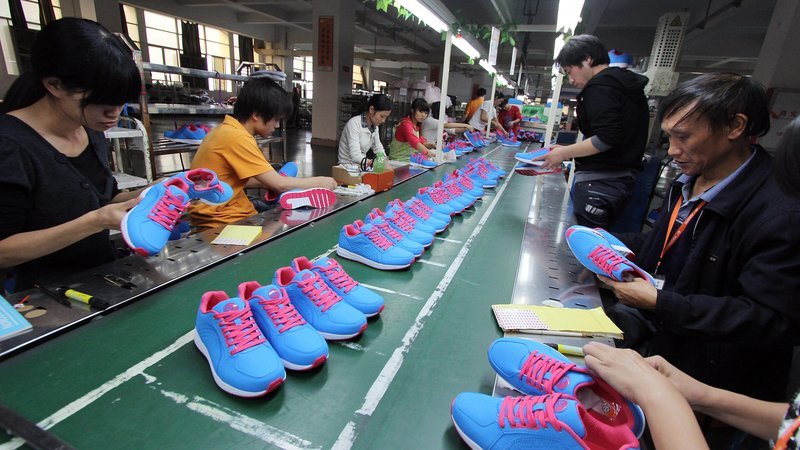They’re called Runners in Australia, Trainers in Britain, Tennis Shoes, or more common term sneakers, in the U.S.A. These rubber souled casual looking shoes are worn by billions of people all around the world. Sneakers were originally invented in the late 19th century. These simple canvas and rubber shoes have changed a lot since then.
Currently, sneaker consumption is at an all time high, especially in the united states where a person purchases an average of three pairs of sneakers per year. To meet this demand, approximately 23 billion shoes are manufactured per year, most of these are produces in China and parts of South-East Asia. But, making shoes has become more complicated, more labor-intensive, and in some ways, more dangerous for the workers involved and for our planet.
Shoe manufacturing accounts for roughly 1/5th of our fashion industry’s carbon emissions. Sneakers alone generate 313 million metric tons of carbon dioxide every year and this is equal to the annual emission of 66 million cars.
The heel, insole, midsole, and upper layer of a sneaker are made of synthetic textiles like polyester, nylon, latex, or polyurethane. Mining the fossil fuels that make up these materials emits tons of various greenhouse gases and processing those raw ingredients into synthetic material also uses a lot of energy.
Some of the sneaker tops are made from natural textiles, such as leather, but tanning of these relies on chromium, a carcinogenic chemical that can damage freshwater ecosystems. The outsoles of a sneaker are made from rubber that has gone through a process called vulcanization. In this process, sulfur is added to the superheated raw rubber to create a material that’s both elastic and sturdy.
Until recently, sneakers used natural rubber for this process but now most outer soles are made from the synthetic blend of natural rubber and byproducts from coal and oil. Producing these materials accounts for 20% of a sneaker’s carbon footprint. But more than 60% of its carbon impact comes from its manufacturing process.

A typical sneaker is comprised of 65 discrete parts, each of which is produced by specialized machinery. This means that it is cheaper for factories to mass-produce each piece separately rather than manufacturing every part under one roof. But the transportation required to ship these pieces to one assembly plant emits even more carbon dioxide.
Once the components arrive at the assembly line, they undergo cutting, pouring, melting, baking, cooling, and gluing before the final products can be stitched together. The assembly of a typical sneaker requires more than 360 steps and this accounts for the remaining 20% of a sneaker’s environmental impact.
The dispersion of factories fuels one more problem as well: Labor Abuse. Most brands do not own or operate their factories. So, the plants they work with are in countries with little to no worker protection laws. As a result, many workers earn below the living wage.

They are also exposed to harmful chemicals like toxic glue fumes. When manufacturing is complete, the shoes are packed and distributed in stores around the world. For many, these shoes could last years, but for someone running 20 miles a week, a pair of these running shoes would start wearing out after roughly 6 months.
Since the shoes are made from so many different materials, they are almost impossible to break down into recyclable components. Around 20% of these shoes are incinerated while the rest are tossed into landfills where they can take up to a thousand years to degrade.
So how can we balance our love for Sneakers with the need for sustainability?
There are a few ways we could reduce the number of carbon emissions emitted by the sneakers industry. First, the designers should streamline the design elements and focus on eco-friendly materials. Factories need to develop energy-efficient manufacturing processes that consolidate steps and sneaker parts.

We, as consumers, need to support companies that use clean energy and ethical manufacturing processes. We can also buy fewer shoes, wear them for longer, and donate those we no longer need. So no matter what our style is, we can all take steps towards a sustainable future.

2 Comments
Pingback: Iron-Based Catalyst can make Jet Fuel from Carbon Dioxide - Craffic
Pingback: Nike is developing Biodegradable Sneakers out of Carbon - Craffic